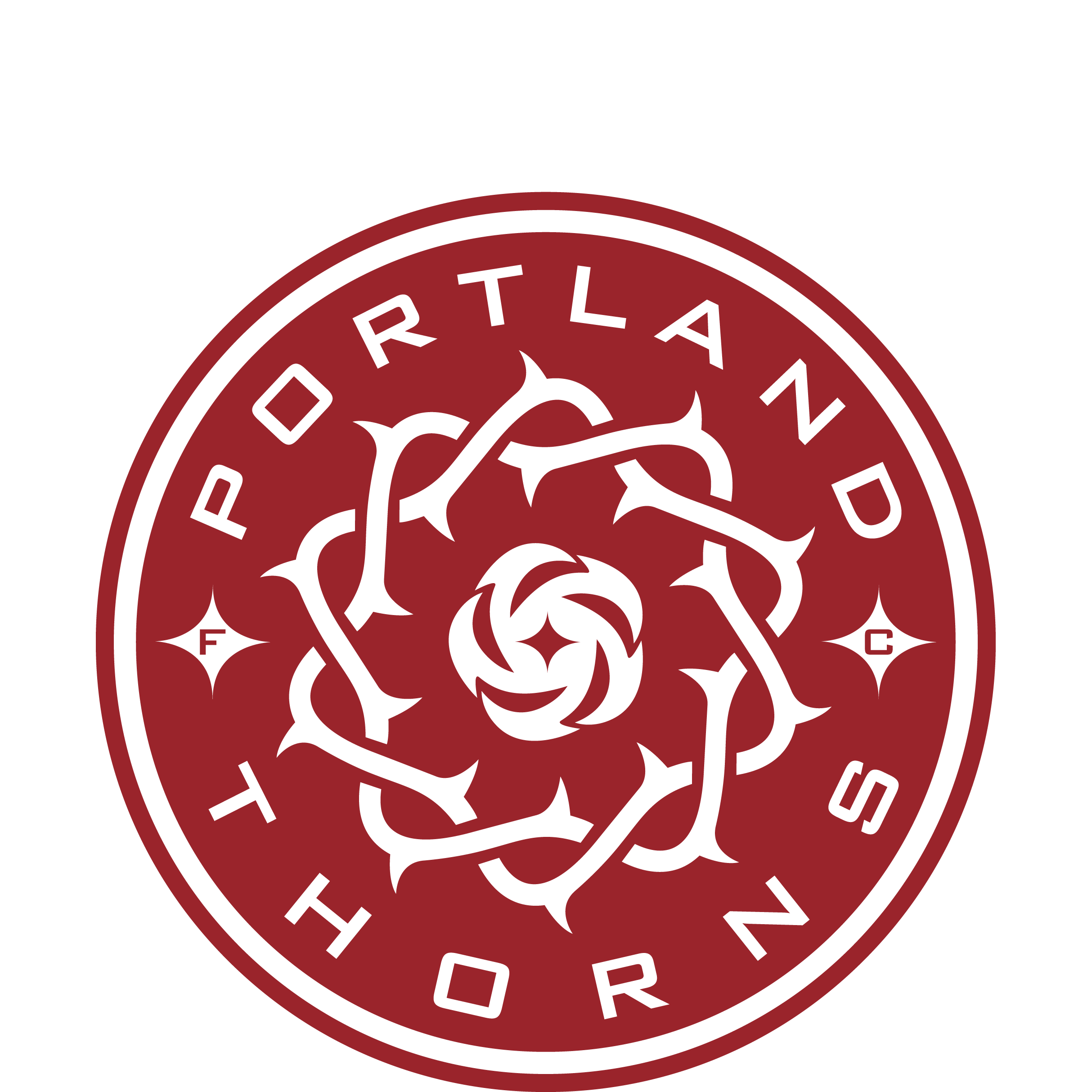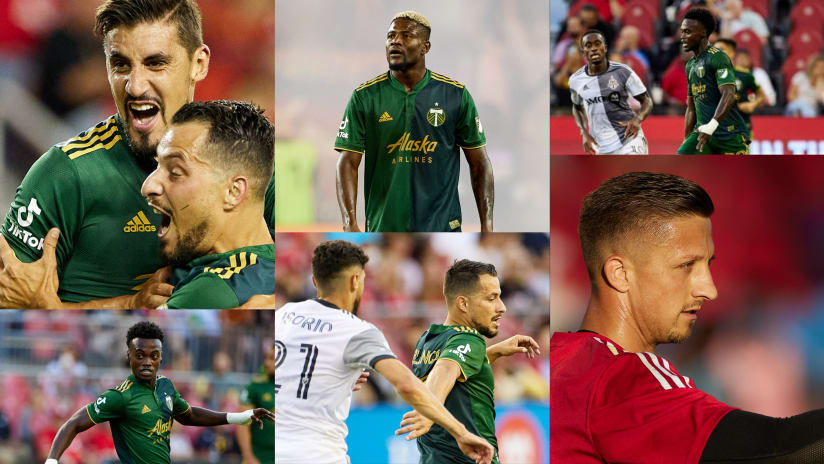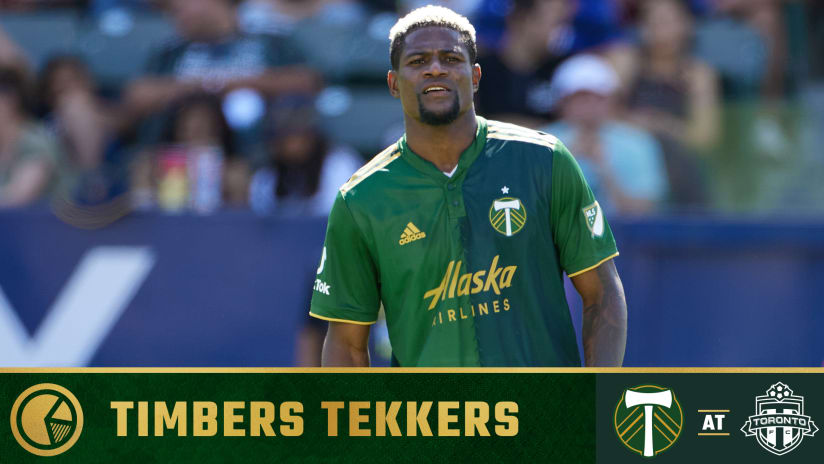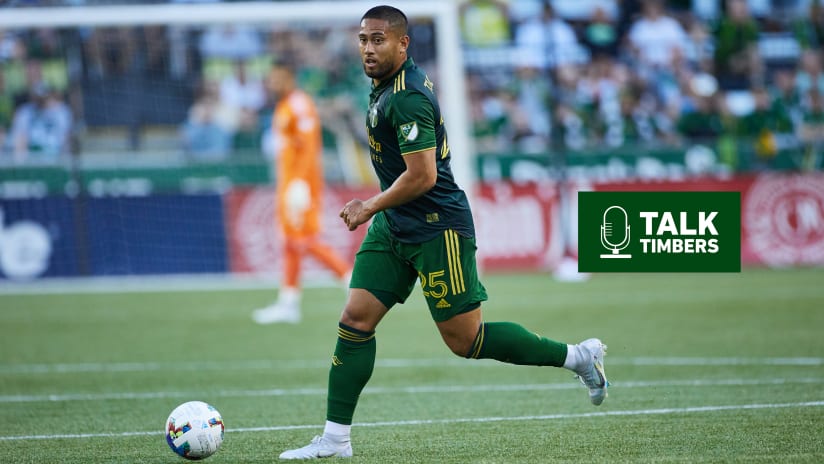Yesterday, we focused on the goalkeepers. Today, we’re jumping to the middle of the field. For our next look at Portland Thorns FC ahead of their preseason, we break down the midfield depth chart.
One of the most significant changes to last year’s Thorns happened in the team’s midfield, where Portland not only incorporated a new, potentially foundational talent but also changed their approach. Gone was the three-player look the team has predominantly used since head coach Mark Parsons’ arrival; in came a new, four-player look hoping to leverage the dynamism of Lindsey Horan and her new teammate, Rocky Rodriguez.
<img alt="Portland Thorns end-2020 lineup" src="https://portland-mp7static.mlsdigital.net/elfinderimages/2021/posts/0127/end%202020.png" width="100%"> |
<img alt="Portland Thorns end-2019 lineup" src="https://portland-mp7static.mlsdigital.net/elfinderimages/2021/posts/0127/end%202019.png" width="100%"> |
Thorns starting midfield shape, final game of 2019 (playoff semifinal at Chicago Red Stars) |
Thorns starting midfield shape, final game of 2020 (Fall Series at OL Reign) |
Combined with the return of defensive midfielder Angela Salem — who rebounded from a 2019 knee injury to claim a starting spot — and the Thorns midfield was practically rebuilt, with the changes evident in the team’s approach. In eight of Portland’s 10 matches in 2020, the Thorns out-possessed their opponent, frequently controlling how games were played even when, early in the year, that control didn’t result in goals.
| Thorns results/possession, 2020 | |||
|---|---|---|---|
| Date | Opponent | Score | Possession |
| June 27, 2020 | North Carolina | 1-2 | 49.6% |
| July 1, 2020 | Chicago | 0-0 | 56% |
| July 5, 2020 | Washington | 1-1 | 52.8% |
| July 13, 2020 | OL Reign | 0-0 | 54.5% |
| July 17, 2020 | North Carolina | 1-0 | 45.7% |
| July 22, 2020 | Houston | 0-1 | 62.8% |
| September 20, 2020 | Utah | 3-0 | 60.8% |
| September 30, 2020 | OL Reign | 4-1 | 59.7% |
| October 3, 2020 | at Utah | 1-1 | 59.1% |
| October 10, 2020 | at OL Reign | 2-1 | 53.6% |
| * - match took place in Utah during the 2020 NWSL Challenge Cup | |||
Portland’s starters weren’t the only players contirbuting to those outcomes. Celeste Boureille played an important role in Challenge Cup before going to France on loan, while both Emily Ogle and Gabby Seiler provided valuable depth, especially in Utah. That depth, though, was thinned out when Ogle and Seiler were traded to the Houston Dash, and while Portland targeted midfield in this month’s NWSL Draft, the unique nature of this year’s draft means those players won't be on the team's initial roster. Depth may have to come from somewhere else.
This is where, for the first time in this series, we get to talk about the virtues of Crystal Dunn. Over the course of the offseason, Dunn’s been able to talk about the challenges of moving into defense with the national team. The contrast to that is either the attacking midfield role she played with the North Carolina Courage or her performance as a forward while winning a Most Valuable Player award with the Washington Spirit. Neither are the types of roles she’d be asked to play in Portland’s midfield, but as those who’ve followed Dunn’s career know, she’s capable of playing any position at any time.
“I literally feel comfortable putting Crystal in any position on the field,” United States women's national team head coach Vlatko Andonovksi said during his team's most recent camp. “She’s going to meet the standard set.”
Similarly, Natalia Kuikka can occupy almost any stop in the formation. She was playing central defense for Göteborg in Sweden, a position she was converted to from midfield while at Florida State. She’s also adept at fullback and, in her younger days, played a more attacking role in midfield. In an ideal world, Kuikka's probably not in midfield on Parsons' whiteboard, but when look at the options Portland can employ in moments of need, or deep in games when they're adapting to scenarios, Kuikka could be a midfield solution.
That is, of course, in addition to Boureille. Challenge Cup seems so long ago, it’s easy to forget that the 26-year-old made three starts and five appearances in the tournament. She was important. In France, she moved directly into the starting lineup for Fleury, just as she was a starter during most of the 2017 and 2018 seasons in Portland. For fans who closely followed Boureille’s time in Australia (from 2016 through 2020), “Cel’s” quality doesn’t need to be reiterated, but since suffering an ankle injury midway through the 2019 season, Boureille’s becoming an overlooked option. Given potential international absences and her ability to fill in at multiple places in midfield (both the sides and the deep role of the diamond), it wouldn’t be surprising to see Boureille continue to accumulate starts.
We also shouldn’t take the Thorns’ starting four for granted. That’s just how the depth chart sat at the end of last season. Yes, given how the team’s managed their offseason, it looks like Salem, Horan, Rodriguez and Sinclair are the incumbents, but things change. Boureille has beaten out Thorns starters before, and there’s no guarantee the team stays with (or plays only) a diamond midfield. Going over these options is fun, but nothing is set in stone.
As of now, though, Salem projects to be the team’s defensive midfielder. In that role, she started eight of Portland's 10 games last season, logging the eighth-most minutes on the team. Over the course of Challenge Cup, any doubts about her recovery from 2019's ACL surgery dissipated, with Salem emerging as an great fit at the base of Portland’s midfield four. Though 2021 will mark her 12th season in professional soccer, she’s only 32 years old. At her position, there's no reason she can’t be a value contributor until further notice.
In front of Salem is unique dynamic: two midfielders who, with complementary skills, styles and roles, allow Portland both symmetry and redundancy in their “number eight” roles. Watch how Portland built play last season, and you see how important the actions of Lindsey Horan and Rocky Rodríguez are. You also see a symbiosis. If an opponent decides to key on one of those players, the other can slide in and mirror the job. No need to change tactics. No need to alter the approach. Though they’re not identical players, the roles Horan and Rodríguez can play in Portland's set up become, to a certain degree, interchangeable. Opponents need to compensate for both to stop how the Thorns build.
Then there’s Christine Sinclair. For years we’ve speculation about how “Sinc” will transition as her career progress, and no doubt, she’s had to make adjustments. During that time, though, her production has been eerily consistent. Consider the goals-per-90 minutes numbers across her nine Thorns seasons:
| NWSL stats, 2013-2020, Christine Sinclair | ||||
|---|---|---|---|---|
| Season | GP | MP | G | G/90 |
| 2013 | 20 | 1783 | 8 | 0.40 |
| 2014 | 23 | 1987 | 7 | 0.32 |
| 2015 | 9 | 735 | 2 | 0.24 |
| 2016 | 11 | 826 | 6 | 0.65 |
| 2017 | 24 | 2140 | 8 | 0.34 |
| 2018 | 24 | 2160 | 9 | 0.37 |
| 2019 | 17 | 1530 | 9 | 0.53 |
| 2020 | 10 | 860 | 6 | 0.63 |
Sinclair scored six goals in four games over Fall Series, and while three of those goals were from the penalty spot, her open-play totals alone would have still ranked second in the league. And that was only three months ago. It's understandable that people wonder when or if Sinclair will slow down, but that hasn’t happened over her time in the NWSL; at least, if it’s happened, she’s found other ways to make up the production.
One day, the Thorns will have to worry about a world without Sinclair, but that day isn’t coming in 2021. Instead, at all points of the midfield, the Thorns will return the players that made so much progress in 2020. Now, it’s a matter of how opponents adjust, and what Portland does to keep moving forward.














